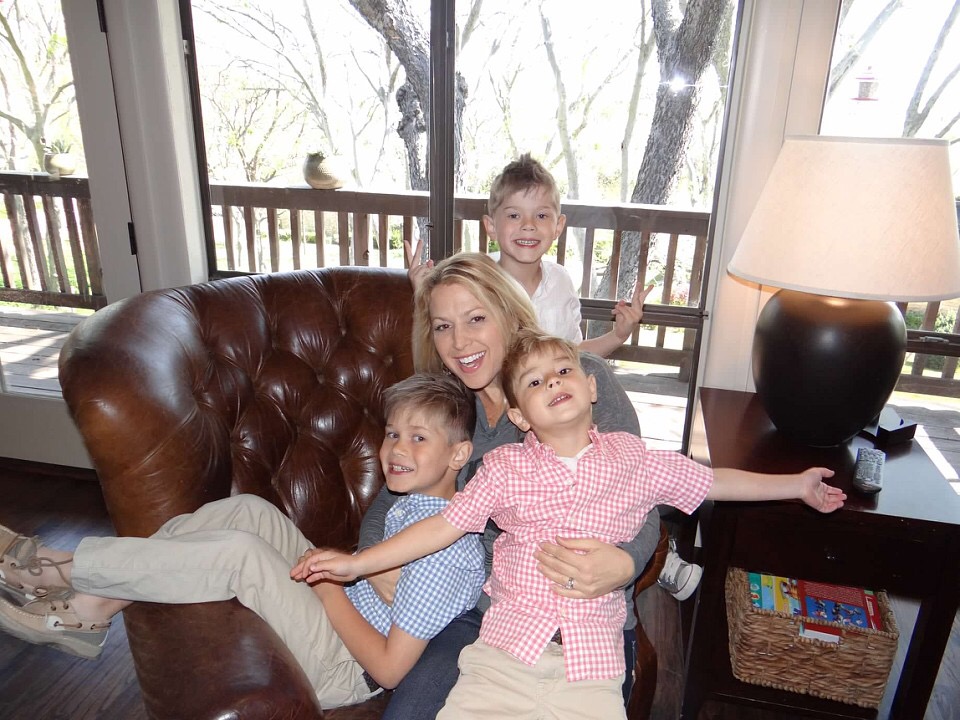In early April 2017, Amanda Martin’s family received profoundly life-altering news concerning her nephew, Luke. Responding to persistent complaints of migraine headaches and double vision, Luke’s parents took him to an eye doctor in Dallas, Texas.
During the eye examination, the doctor identified a concerning aspect and promptly halted the procedure. She advised Luke’s mother (Amanda’s sister) to rush to the Children’s Hospital ER in Dallas, where a prepared medical team awaited their arrival.
Within moments, Luke and his mother reached the hospital and met with the assembled medical experts. Following a swift diagnostic scan, the results were swiftly delivered: Luke was diagnosed with a sizable brain tumor measuring 6 centimeters. Further investigation over the subsequent five weeks confirmed the tumor as an Anaplastic Ependymoma grade 3, a rare and highly aggressive form of cancer.
At the tender age of 5, Luke, affectionately known as Lukey, displayed a vibrant personality and harbored profound affection for his two older brothers, parents, and extended family. Until then, he embodied the quintessential energetic 5-year-old boy, brimming with vitality and a fervent love for soccer.

Within a span of just four weeks, Luke had already undergone three brain surgeries due to the aggressive nature of his cancer. The urgency of his situation necessitated an equally vigorous treatment approach, encompassing further chemotherapy, a fourth brain surgery, and radiation therapy. In their pursuit of the most effective treatment options, Luke’s parents, Wendi and Cole, explored the possibilities offered by St. Jude Children’s Research Hospital. Subsequently, Luke’s enrollment at St. Jude in Memphis, TN was confirmed, and it served as the venue for his comprehensive treatment regimen. Notably, the treatment provided by St. Jude is rendered free of charge. However, numerous ancillary expenses remain, coupled with the existing medical bills incurred by Luke’s previous treatments.
Her sister’s family’s insurance couldn’t cover all the treatment cost so, Amanda conducted a fundraising to help her sister’s family and her beloved nephew. With the help of helping souls, she was able to raise almost $98,000 to help her nephew’s treatment.
Symptoms of Brain Cancer:
Brain cancer, also known as brain tumor, is a condition characterized by abnormal growths of cells within the brain. Symptoms can vary depending on the tumor’s location, size, and type. Common symptoms include:
- Headaches: Persistent, severe headaches that may worsen over time, especially in the morning.
- Seizures: Unexplained seizures or convulsions, which can vary in intensity.
- Cognitive Changes: Changes in cognitive abilities, such as memory problems, difficulty concentrating, or confusion.
- Motor Dysfunction: Weakness or numbness in the limbs, often on one side of the body.
- Sensory Changes: Changes in sensory perception, such as difficulty with vision, hearing, or smell.
- Balance and Coordination Issues: Problems with balance, coordination, and walking.
- Nausea and Vomiting: Persistent nausea and vomiting unrelated to other factors.
- Personality Changes: Unexplained mood swings, irritability, or personality changes.
- Speech Difficulties: Difficulty speaking, slurred speech, or difficulty finding the right words.
- Vision Problems: Blurred or double vision, partial vision loss, or seeing flashing lights.
It’s important to note that these symptoms can also be caused by other medical conditions, and their presence does not necessarily indicate brain cancer. However, if any of these symptoms are persistent, worsening, or concerning, it’s advisable to consult a medical professional for proper evaluation and diagnosis.
Treatment of Brain Cancer:
The treatment of brain cancer is complex and varies based on factors such as the type of tumor, its location, and the patient’s overall health. Treatment options may include:
- Surgery: Surgical removal of the tumor is often the first step if the tumor is accessible and its removal won’t cause significant damage to the surrounding brain tissue. The extent of surgery depends on the tumor’s characteristics.
- Radiation Therapy: Radiation therapy uses high-energy beams to target and destroy cancer cells. It may be used after surgery to target any remaining cancer cells or as the primary treatment for inoperable tumors.
- Chemotherapy: Chemotherapy involves the use of drugs to kill or inhibit the growth of cancer cells. It may be administered orally or intravenously and is sometimes used in conjunction with radiation therapy.
- Targeted Therapy: This approach targets specific molecules involved in the growth of cancer cells. It is often used when certain molecular markers are present in the tumor.
- Immunotherapy: Immunotherapy harnesses the body’s immune system to fight cancer cells. It’s a promising area of research and may be used in clinical trials.
- Clinical Trials: Clinical trials offer experimental treatments that may not be widely available. They provide an opportunity for patients to access cutting-edge therapies.
- Palliative Care: For advanced cases or when a cure isn’t possible, palliative care focuses on improving the patient’s quality of life. It manages symptoms, provides pain relief, and offers emotional support.
Brain cancer treatment plans are highly individualized and are often developed collaboratively by a team of medical professionals, including neurosurgeons, oncologists, radiation oncologists, and other specialists. Regular follow-up appointments and imaging are crucial to monitor the tumor’s response to treatment and make adjustments as needed.



0 Comments